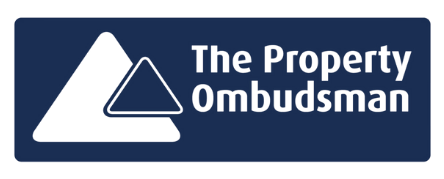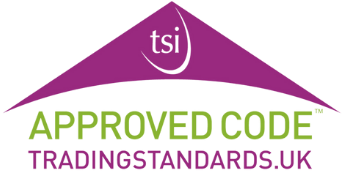Are you looking to buy a property?
If so, it’s crucial that you clearly understand what you can and can’t afford.
It will save you from overspending or buying the wrong type of property.
Read on for a step-by-step guide on determining and then finding what property you can afford.
Step 1: Find out how much you can borrow
Before you search for a property, you need to know how much you can afford to borrow to buy one.
After all, it can challenging to get the mortgage you want.
What impacts the amount you can borrow?
Main borrowing factors
Two main factors decide the amount you borrow:
- Your household income: Your salary (unless you have two jobs)
- Your deposit size: The amount you’ve saved to put down on the house.
Most banks lend you between 4 to 5x your annual income.
So, if your household income is £50,000, you can typically borrow between £200,000 and £250,000.
The larger your deposit, the more likely a bank will lend to you.
A loan-to-value ratio is the amount of equity you’ve got in the house versus the amount you’ve borrowed.
As with deposits, the higher they are, the more secure and favourable they are to lenders.
Other factors
Other factors impact what you can borrow, too.
- Your credit score
- Employment status (i.e., whether or not you’re self-employed)
- Employment history.
Each mortgage is treated on a case-by-case basis.
If you need more guidance on what you can borrow, speak to a mortgage adviser.
Do some banks let me borrow more than others?
Yes. Each bank has its own criteria for lending money. Some will be more relaxed than others.
Even the mortgage application process varies in length for different applicants.
You’ll find banks that support first-time buyers and thus might accept an application with only a 5% deposit. But for other banks, this loan-to-value ratio might be too risky.
How long do mortgage offers last?
Mortgage offers usually last between 3 – 6 months.
Mortgage in principle
Each major lender allows you to get a mortgage in principle (MIP) through their website.
This is when you enter your essential details, and they state how much you can lend. It usually remains valid for 90 days.
Mortgage brokers and advisers can point you in the right direction, too. These experts know which banks offer the best deals.
There are even mortgage comparison websites available for you to use.
Step 2: Consider repayments
Once you have determined how much you can borrow, it’s essential to consider how sustainable repayments will be.
How much of my mortgage will I have to repay per month?
It depends. There are dozens of mortgage calculators online that help you figure this out based on the information you put in.
Mortgage terms
Each mortgage has a mortgage term. This is the period you’ll pay the loan back over. It can be anywhere from 5 to 40 years.
Mortgages with a 40-year period will almost always have smaller monthly payments – but you’ll pay far more interest on the loan.
Interest rates
The interest rate impacts this figure, too.
If you’re on a fixed-rate mortgage, this number is locked in for up to 5 years.
But if you’ve got a variable-rate mortgage, it can fluctuate in line with interest rates in the United Kingdom.
This makes it possible for your monthly payments to go up over time or down.
What happens if interest rates change?
When interest rates increase, it means higher monthly payments for people on a variable mortgage.
If interest rates decrease, this means lower mortgage payments for people on a variable mortgage.
(This doesn’t apply to a fixed-rate mortgage, where you’re locked into a set interest rate.)
Thinking ahead with interest rates
When first taking out a mortgage, many house buyers try to be strategic with interest rates.
If rates are strongly expected to decrease, some people wait until this happens to make their initial deal will be more affordable.
Step 3: Calculate your budget
You can’t use your entire budget to buy a house if you can’t afford these essential components, too!
Getting a mortgage in principle is the best way to know what you can afford.
Combining the mortgage size with your deposit gives you your exact price range.
Don’t forget that there are many outgoings involved with buying a house, including:
And more.
If you’re buying a leasehold property, make sure to factor service charge and ground rent into your costs.
These can be several thousand per year. You’ll need to have enough money to meet this cost.
Cutting down on costs
Finally, it’s worth focusing on your spending habits and seeing if you can cut down in places.
Removing needless expenses can make all the difference if you’ve set your sights on a particular property or price range.
Step 4: Find a house
How to find a house you can afford
Once you’ve calculated your budget, it’s time to find the right house.
Search on online platforms
Online property platforms such as Rightmove and Zoopla are extremely popular for browsing properties.
You can create a search based on your maximum price range. This shows all houses in a particular area that are suitable.
Use an estate agent
An estate agent can point you in the right direction, too. Contact one in the area you’re looking to buy and ask to see houses that fit your needs.
Consider different property types
There are many different kinds of property available, each with its own advantages, disadvantages, and average costs.
- Detached houses are the most expensive, followed by semi-detached and terraced houses
- Flats, maisonettes, and bungalows are more affordable options.
- And end-of-terrace houses offer a balance of privacy and affordability.
You might, for example, find that you need to consider terraced house rather than semi-detached ones.
Consider other areas
It’s not always possible to live in your current area.
For example, if you’re moving out from your parents, their budget may be considerably higher than yours.
Look at more affordable locations that you’d still happily live in. By expanding your area, you have more options to choose from.
Step 5: Plan for the future
Ways to increase the value of property I can afford
You can increase the value of the property you can afford in several ways.
Firstly, you should try to increase your deposit size. This might involve several months (or years) of saving up.
Perhaps you’ll need to cut down on needless expenses or put your savings into a higher interest rate account.
Increasing your income is another critical step. Speak to your workplace and try to negotiate a pay rise.
If you’re self-employed, you could take a slightly higher salary out of your company each year, although this might affect your finances elsewhere.
It’s a careful balancing act and worth getting advice on.
You can team up with someone else to increase the amount you can borrow. Two combined incomes (and deposits) are far better than one.
A lender will view you more favourably. Just remember that one of you often becomes financially responsible if the other fails to meet their payments.
Ask your mortgage adviser for guidance on all these details. It’s about pursuing the method that suits your situation best.
You could also have to be more realistic about what you can afford.



















